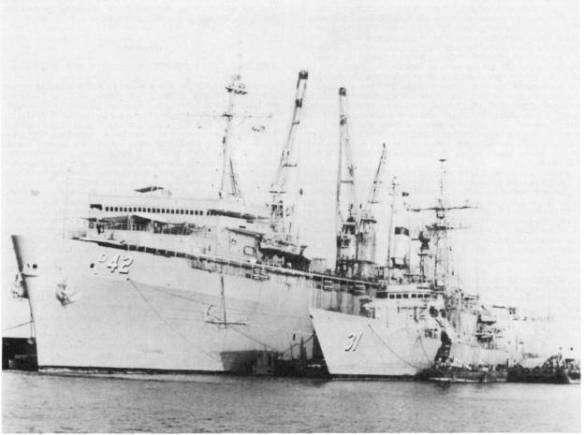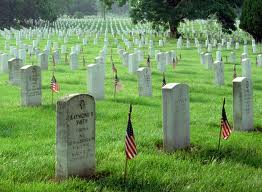 The smell of burned human flesh is a persistent thing. After it has seared itself into your nostrils, it then etches itself into your mind. It may slip into remission for decades, and then something will happen to bring it back to life, and you smell it again. Truth be told, it never really goes away. It was the first smell that greeted our salvage team as we stepped aboard the USS STARK (FFG 31) and, with each breath, it told us an acrid tale of horrific suffering, paralyzing fear, and tragic death. It was the story of thirty seven sailors who had died in a storm of burning phosphorus and molten aluminum. They breathed their last torrid breaths in a real-world hell that no biblical description could ever do justice – and they did so serving their country.
The smell of burned human flesh is a persistent thing. After it has seared itself into your nostrils, it then etches itself into your mind. It may slip into remission for decades, and then something will happen to bring it back to life, and you smell it again. Truth be told, it never really goes away. It was the first smell that greeted our salvage team as we stepped aboard the USS STARK (FFG 31) and, with each breath, it told us an acrid tale of horrific suffering, paralyzing fear, and tragic death. It was the story of thirty seven sailors who had died in a storm of burning phosphorus and molten aluminum. They breathed their last torrid breaths in a real-world hell that no biblical description could ever do justice – and they did so serving their country.
On 17 March 1987 the USS STARK, a US Navy guided missile frigate, was on patrol in the Persian Gulf. Its task was to ensure that the Iran Iraq War did not close the gulf’s shipping lanes. It was a mission that they had conducted many times. Watch stations were manned according to doctrine, dinner had been served, and many of the crew were hitting their racks so that they could get up for their early morning watches. It was, for all intents and purposes, a routine evening. That all changed at around 8pm, when an Iraqi Mirage mistook the USS STARK for a hostile target, and attacked it with two French made Exocet anti-surface missiles.
The Exocet missile is an extremely lethal weapon. Fired from either an aircraft or a ship, it skims below radars at about 12 feet over the water at speeds reaching Mach 1. It is designed to penetrate a target before detonating its five hundred pound warhead to ensure maximum damage is inflicted. Though the USS STARK had systems on board that could defend against such a missile, they neither detected nor engaged the inbound weapons. Shortly after 8pm, the first missile struck the USS STARK below its port bridge wing. It ripped into crew berthing where, just seconds earlier, dozens of sailors had been peacefully sleeping. Its warhead failed to explode as designed, but as the missile tore through the ship’s internal bulkheads, it broke into hundreds of pieces sending shrapnel and burning phosphorus-based fuel in all directions. The unexploded titanium encased warhead cut through the interior aluminum bulkheads like butter, eventually coming to rest on the starboard side. About twenty seconds after the first missile hit its target, the second Exocet entered the ship just forward of the first strike. Unlike the first missile however, its warhead exploded devastating the interior of the ship. Those that were able to get out of berthing before the second strike were lucky. For many of those wounded in place or unable to escape however, death would come in its most horrible form – fire.
Twenty nine sailors were killed in the attack with another eight sailors later succumbing to their wounds. After the attack, ‘class delta’ metallic fires raged for nearly twenty four hours threatening to sink the small ship altogether. Had it not been for the valiant efforts of the remaining ships crew and the diligent support of other US Warships in the area, the USS STARK would most certainly have broken in half from the heat and descended into the murky depths of the gulf. Over the next couple of days however, the fires were extinguished, the remains of the dead that could be located were removed, and the badly crippled ship was towed to Bahrain. The damage was nothing less than breathtaking:
 Port side of the USS STARK (FFG 31)
Port side of the USS STARK (FFG 31)
 Charred Remains of the USS STARK
Charred Remains of the USS STARK
By the time we arrived on the USS ACADIA (AD42) to conduct salvage and repair operations, the fires were long out. As a junior officer, I led a small boarding party to survey the damage. The decks were so fragile from the phosphorus fueled fires, we had to pound the deck in front of us with a steel rod to ensure it could support our weight. Death had paid an uninvited visit to the USS STARK and, days later, its presence was still clear. It sucked the wind out of my lungs, and made me want to hold my breath and run from the grim reality in front of me. It made one wish for clean air almost immediately; clean air that thirty seven sailors would never again breath.
 USS STARK nested next to Destroyer Tender USS ACADIA (AD 42)
USS STARK nested next to Destroyer Tender USS ACADIA (AD 42)
The USS STARK was brought alongside our ship for repairs, and in the weeks that followed, we were able to fix her up enough for her to return home safely. On the day she was ready to depart Bahrain, she looked as good as new from the outside. Freshly painted sheet metal covered the carnage inside, and her basic steering and propulsion systems were restored. Just weeks after such a devastating blow, this proud little ship sailed southward through the Straights of Hormuz under her own power sending an unmistakable message to the rest of the world:
“You can break our ships, but you will never break the American Spirit!”
It is this very spirit that makes us who we are as a people. We can be damaged, but NEVER defeated. We are the mightiest force for freedom and human dignity the world has ever known, and no missile or bomb will ever change that fact. We rise when other nations fall. We defend and liberate those that others oppress and torment. We are a force for good and, as long as we remain so, we will endure – against all odds. This was the message that the USS STARK sent the world.
Sadly, the USS STARK no longer sails the world’s seas. Years after the incident she was decommissioned, and quietly cut to pieces in a shipyard. Though, she is no longer with us – her spirit remains in the hearts of those she touched. Each Memorial Day, I stop to say a prayer of gratitude for those who perished on that fateful day, for without brave men and women like these, our nation would be nothing more than an odd footnote in world history. I then remember the smell. After all these years, it still serves as a stark reminder that our freedom comes at great price. It still haunts me to this day…and I pray that I will never forget it.
On this Memorial Day please remember those who lost their lives on board the USS STARK on 17 March, 1987 while faithfully serving their nation:
SN Doran H. Bolduc,
Lacey, WA |
RMSA Dexter D. Grissett,
Macon, GA |
FCCS Robert L. Shippee,
Adams Center, NY |
BM1 Braddi O. Brown,
Calera, AL |
FC3 William R. Hansen,
Reading, MA |
SMSA Jeffrey C. Sibley,
Metairie, LA |
FC3 Jeffrey L. Calkins,
Richfield Springs, NY |
GMG3 Daniel Homicki,
Elizabeth, NJ |
OS3 Lee Stephens,
Pemberton, OH |
SN Mark R. Caouette,
Fitchburg, MA |
OSSN Kenneth D. Janusik, Jr.,
Clearwater, FL |
BM2 James R. Stevens,
Visalia, CA |
SN John A. Ciletta, Jr., †
Brigantine, NJ |
OS1 Steven E. Kendall,
Honolulu, HI |
ET3 Martin J. Supple,
Jacksonville, FL |
SR Brian M. Clinefelter,
San Bernardino, CA |
EMCS Stephen Kiser,
Elkhart, IN |
FC1 Gregory L. Tweady,
Champaign, IL |
OS3 Antonio A. Daniels,
Greeleyville, SC |
SM1 Ronnie G. Lockett,
Bessemer, AL |
ET3 Kelly R. Quick,
Linden, MI |
ET3 Christopher DeAngelis, †
Dumont, NJ |
GMM1 Thomas J. MacMullen,
Darby, PA |
SN Vincent L. Ulmer,
Bay Minette, AL |
IC3 James S. Dunlap,
Osceola Mills, PA |
EW3 Charles T. Moller,
Columbus, GA |
EW3 Joseph P. Watson,
Ferndale, MI |
STGSN Steven T. Erwin, †
Troy, MI |
DS1 Randy E. Pierce,
Choctaw, OK |
ET3 Wayne R. Weaver, II,
New Bethlehem, PA |
RM2 Jerry Boyd Farr,
Charleston, SC |
SA Jeffrei L. Phelps,
Locust Grove, VA |
OSSN Terrance Weldon,
Coram, NY |
QMCS Vernon T. Foster,
Jacksonville, FL |
GM3 James Plonsky,
Van Nuys, CA |
IC2 Lloyd A. Wilson,
Summerville, SC |
|
SMSN Earl P. Ryals, †
Boca Raton, FL
|
|
|
|
Head Muscle salutes all the men and women who faithfully and fearlessly wear the cloth of our nation. God bless and Godspeed.
WordPress.com PoliticalBlogger Alliance
 At 1230 p.m. on 27 March 2011 Mr. Edward Schulken, a Navy Veteran, was laid to rest in San Diego California with full military honors. His flag draped coffin rested just in front of a pulpit where a Navy Chaplain spoke fondly about a man he never knew. In his eulogy for the stranger, the chaplain could only note that, “ours was not to judge.”
At 1230 p.m. on 27 March 2011 Mr. Edward Schulken, a Navy Veteran, was laid to rest in San Diego California with full military honors. His flag draped coffin rested just in front of a pulpit where a Navy Chaplain spoke fondly about a man he never knew. In his eulogy for the stranger, the chaplain could only note that, “ours was not to judge.”



